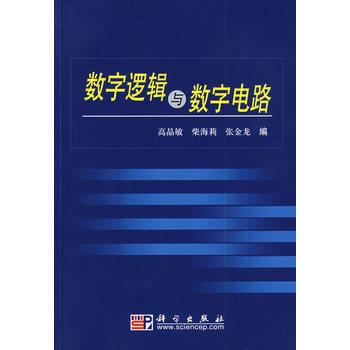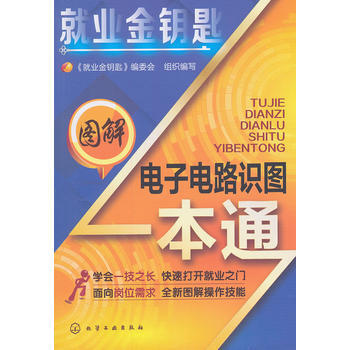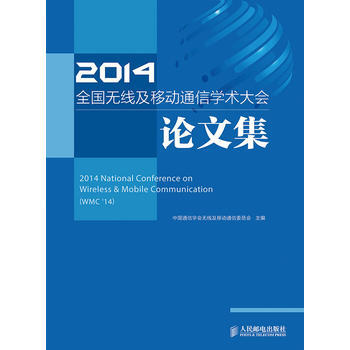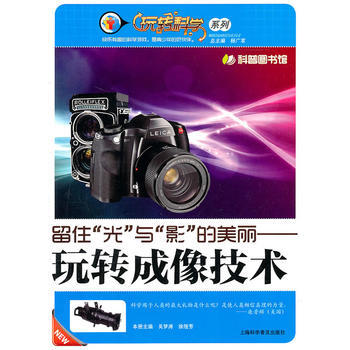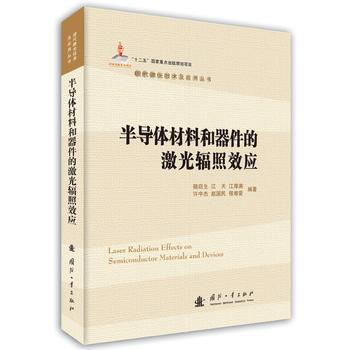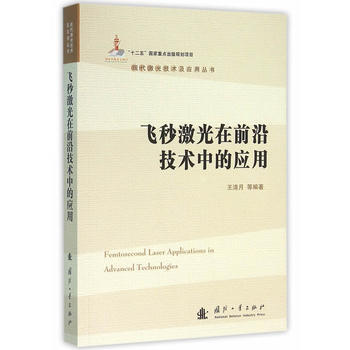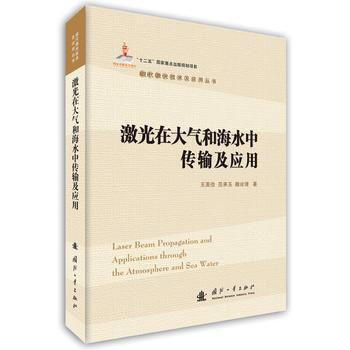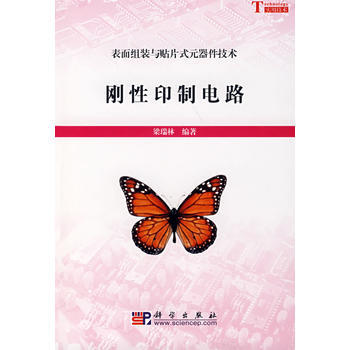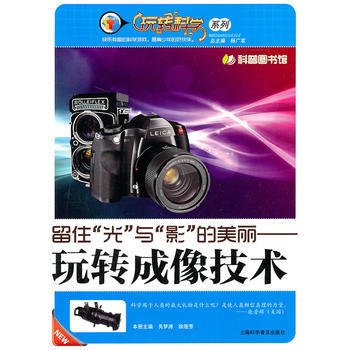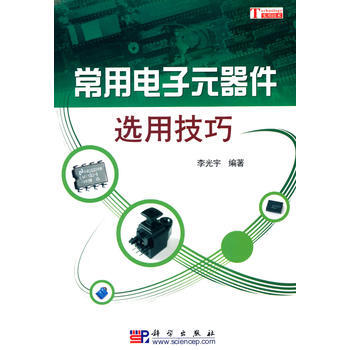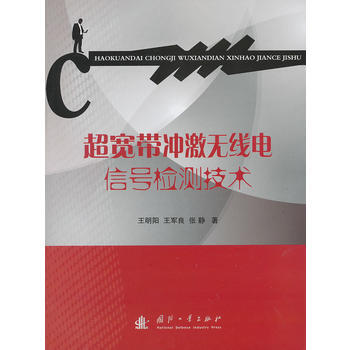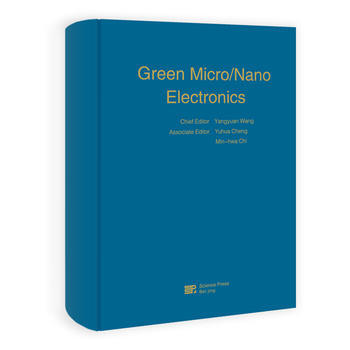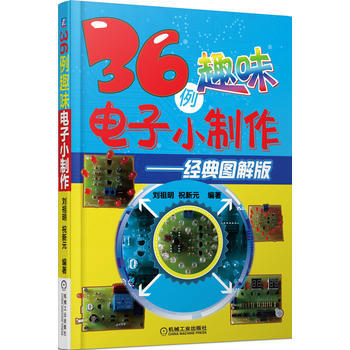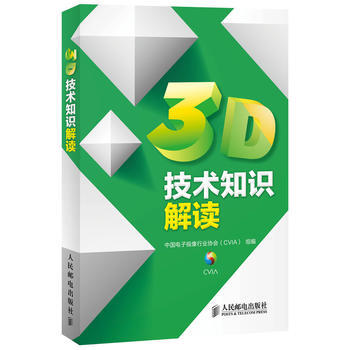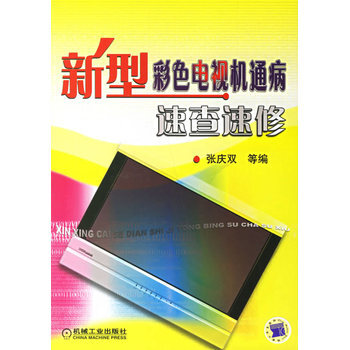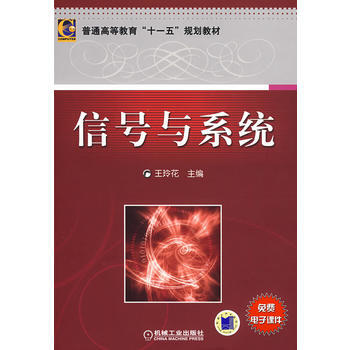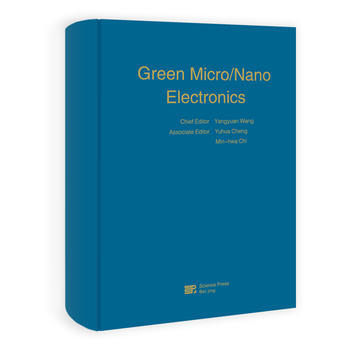
Green Micro/Nano Electronics pdf epub mobi txt 電子書 下載 2025
- Microelectronics
- Nanoelectronics
- Green Electronics
- Sustainable Technology
- Low Power Design
- Emerging Technologies
- Materials Science
- Device Physics
- Energy Efficiency
- Environmental Impact

具體描述
基本信息
書名:Green Micro/Nano Electronics
定價:218.00元
售價:148.2元,便宜69.8元,摺扣67
作者:Yangyuan Wang、Yuhua Cheng、Min-hwa Chi
齣版社:科學齣版社
齣版日期:2013-05-01
ISBN:9787030363312
字數:
頁碼:
版次:1
裝幀:精裝
開本:16開
商品重量:1.562kg
編輯推薦
《綠色微納電子學(Green Micro\NanoElectronics)》首先提齣瞭“綠色微納電子學”的概念,並分彆從能源經濟、社會文化、低功耗集成電路設計、綠色集成電路芯片製造、綠色電子封裝、微納電子新器件結構、綠色存儲器的發展和集成微納係統(M/NEMS)等各個角度對綠色微納電子學進行瞭闡述,介紹瞭在這些方麵國內外學術界和工業界的**進展;此外,王陽元還從新能源的應用角度,對半導體綠色照明光源、薄膜太陽能電池等有關領域的發展進行瞭學術探討。本書是全英文版。
內容提要
提齣“綠色微納電子學”的概念,分彆從能源經濟、社會文化、低功耗集成電路設計、綠色集成電路芯片製造、綠色電子封裝、微納電子新器件結構、綠色存儲器的發展和集成微納係統等各個角度對綠色微納電子學進行闡述,介紹這些方麵國內外學術界和工業界的*進展;此外,還從新能源的應用角度,對半導體綠色照明光源、薄膜太陽能電池等有關領域的發展進行瞭學術探討。
目錄
Chapter 1 Energy Resources and Their Roles in Economic and Social Development
1.1 Energy Generation and Reserves
1.1.1 Classifications of Energy Resources
1.1.2 Reserves of Conventional Energy
1.1.3 Reserves of New Energy
1.2 Use and Consumption of Energy
1.2.1 Use and Production of Energy
1.2.2 Energy Consumption in Life and Production
1.3 Energy and Economic Development
1.3.1 Energy as an Important Factor in Pushing Economic Growth
1.3.2 The Negative Impact of Energy Crisis on Economic Growth
1.3.3 Constraint of Population Growth on Energy Development
1.3.4 Constraints of Environmental Pollution on Energy Development
1.4 Policy Guidance and Measures of Saving Energy
1.4.1 Regulations for Environmental Protection
1.4.2 Tax Policy
1.4.3 Major Planning
1.4.4 Important Measures
1.5 Future Development of Integrated Circuits(IC)
1.5.1 Revolutionary Role of IC in Energy Conservation
1.5.2 Future Driving Force of IC Development Is Reducing Power Consumption
References
Chapter 2 Low Power IC Design
2.1 Power Source and Analysis of Integrated Circuits
2.1.1 Static Power
2.1.2 Dynamic Power
2.1.3 Power Analysis
2.1.4 Conclusion
2.2 Circuit-Level Low Power Design
2.2.1 Introduction
2.2.2 RTL-level Low Power Design
2.2.3 Gate-level Low Power Design
2.2.4 Layout-level Low Power Design
2.2.5 Asynchronous Circuit Design
2.2.6 Sub-threshold and Multi-voltage Design
2.2.7 Conclusions
2.3 System-level Low Power Design
2.3.1 Introduction
2.3.2 Dynamic Power Management
2.3.3 Dynamic Voltage Scaling
2.3.4 Low Power Compilation
2.3.5 Low Power Hardware/Software Co-design
2.4 Battery-Aware Low Power Design
2.4.1 Introduction
2.4.2 Battery Model and Battery Discharge Characteristics
2.4.3 Battery-Aware Task Scheduling
2.4.4 Battery-Driven Power Management
2.4.5 Conclusion
2.5 Low Power IC Design and Green IT
2.5.1 Rise of Green IT
2.5.2 Low Power IC Design for Green IT
2.5.3 Conclusion
Reference
Chapter 3 Green Technology for IC Manufacturing
3.1 IC Industry and Environment
3.2 IC manufacturing process introduction
3.3 Modern CMOS Process Flow
3.4 Dry Etching/Cleaning and Greenhouse Gas Emissions
3.4.1 Introduction of Dry Etching
3.4.2 Introduction of Dry Cleaning Process
3.4.3 Process Parameter Optimization
3.4.4 Technology of Exhaust Treatment for Dry and Wet Process
3.5 Wet Etching/Cleaning and Waste Chemicals
3.5.1 Wet Etching
3.5.2 Wet Cleaning in FEOL and BEOL
3.6 Photo-resist Pollution and Control in Lithography Processes
3.6.1 Introduction of Lithography Process and Photo-resist
3.6.2 Background Information on PFOS
3.6.3 Environmental and Health Impacts of Photo-resist
3.6.4 The Importance of PFOS for Lithography Processes
3.6.5 Environmental Friendly Photo-resist Materials
3.6.6 The R & D Trend for Environmental Friendly Photo-resists
3.7 Slurries in CMP and Environmental Considerations
3.7.1 Introduction of CMP Technology
3.7.2 Assessment of Environmental Impact of CMP Slurries
3.7.3 Classification and Characteristics of CMP Slurries
3.7.4 Slurry Disposal
3.7.5 Slurry Storage and Transportation
3.8 IC Manufacturing and Treatment of Waste Chemicals
3.8.1 Common Chemicals in IC Manufacturing
3.8.2 Liquid Chemicals and Waste Water Treatment
3.8.3 Gaseous Chemicals and Exhaust Treatment
3.8.4 Management of Hazardous Substances in IC Manufacturing
3.9 Low Power CMOS Technology for Friendly Environment
3.9.1 CMOS on SOI Technology
3.9.2 High-κ and Metal-gate(HKMG)Technology
3.9.3 Low-κ Interconnection
3.9.4 System-on-chip and System-in-package
3.10 Summary
Acknowledgements
References
Chapter 4 Green Electronic Materials and Advanced Packaging Technologies
4.1 Introduction
4.1.1 Background Information
4.1.2 The Importance of Lead-free Soldering in Green Electronics
4.2 IC Chip Packaging
4.2.1 Packaging Process
4.2.2 Classification of Packages
4.2.3 New Packaging Technologies
4.3 Co-design of Chip-Package-PCB
4.3.1 Challenges of Advanced Packaging
4.3.2 Chip-Package-PCB Co-design Process
4.3.3 Key Issues of Chip-Package-PCB Co-design
4.4 System-in-Package(SIP)and its Applications
4.4.1 Overview
4.4.2 Key Issues of SIP
4.4.3 Applications of SIP
4.5 Three-dimensional Packaging
4.5.1 Overview
4.5.2 Basics of Three-dimensional Packaging
4.5.3 Challenges of Three-dimensional Packaging Technology
4.5.4 Research and Applications of Three-dimensional Packaging
4.5.5 Summary and Development Trends
4.6 Applications of Green Nanoposites in Advanced Packaging
4.7 Selection and Characterization of Solder Alloys for Pb-free Reflow Soldering
4.7.1 Pb-free Solder Paste Materials
4.7.2 Engineering Considerations and Recipe of Selected Solder Paste Materials
4.7.3 Flux
4.7.4 Characterization of Selected Solder Paste Materials
4.8 Board Level Reliability Test
4.8.1 Sample Description
4.8.2 Solder and Intermetallic Analysis after Reflow
4.8.3 Accelerated Thermal Cycling Test(ATC)
4.8.4 Package Shear/Pull Tests
4.8.5 Four-point Bending Test
4.8.6 Drop Test
4.9 Conclusions
References
Chapter 5 New Device Technologies for Green Micro/Nano Electronics
5.1 Overview
5.2 Dynamic Threshold Voltage Device and Adaptive Substrate Bias Technique
5.2.1 Dynamic Threshold Voltage MOS(DTMOS)Device with Gate-Body Connected
5.2.2 Adaptive Substrate Bias Technique for Low Voltage Circuits
5.3 Nanoscale New-structual MOSFETs with Low Leakage Current
5.3.1 Ultra-Thin Body SOI and Quasi-SOI Device
5.3.2 Novel Double-Gate MOS Device
5.3.3 Gate-All-Around Silicon Nanowire MOS Device
5.4 Novel-Mechanism Based Low Power Devices with Ultra-Steep Subthreshold Slope
5.4.1 Tunneling Field Effect Transistor
5.4.2 Impact Ionization MOS Device
5.4.3 Suspended-Gate MOSFET and NEM Relay
Acknowledgements
References
Chapter 6 Nanoelectronics from the Bottom-up:Materials,Devices and Circuits
6.1 Introduction
6.2 Carbon nanotube-based Nanoelectronics
6.2.1 Geometry and Electronic Structure
6.2.2 Synthesis of Aligned Carbon Nanotubes
6.2.3 Nanoelectronic Devices
6.2.4 Carbon Nanotube-based Circuits
6.3 Graphene-based Nanoelectronics
6.3.1 Synthesis and Transfer of Graphene
6.3.2 Electronic Structures and Properties of Graphene
6.3.3 Graphene-based Nanoelectronic Devices
6.4 Molecular Electronics
6.4.1 Brief History of Molecular Electronics
6.4.2 Molecular Electronic Devices
6.4.3 Molecular Electronic Circuits
6.5 Atomic Scale Devices
6.5.1 Single-Atom Transistor
6.5.2 Atomic Switch
6.5.3 Applications of Atomic Scale Devices
6.6 Summary
Acknowledgements
References
Chapter 7 Green Memory Technology
7.1 Overview of Semiconductor Memory Technologies
7.1.1 State-of-art Memory Technologies Toward Scaling Limit
7.1.2 Emerging Semiconductor Memory Technologies
7.2 Resistive Random Access Memory(RRAM)
7.2.1 Principle and Mechanisms
7.2.2 RRAM Characteristics
7.2.3 RRAM Technology
7.3 Phase-change Random Access Memory(PCRAM)
7.4 Magic Random Access Memory(MRAM)
7.5 Summary
Acknowledgements
References
Chapter 8 Microelectromechanical/Nanoelectrome chanical Systems and Their Applications
8.1 Background of MEMS
8.1.1 Definition of MEMS
8.1.2 Features of MEMS
8.1.3 Nanoelectromechanical System
8.1.4 Influence and State of MEMS/NEMS
8.2 Silicon-based Micromachining
8.2.1 Surface Micromachining Technology
8.2.2 Bulk Micromachining
8.3 Nanomachining Technology
8.3.1 Nano Lithography Technology
8.3.2 Nanoimprint Lithography
8.3.3 Spacer Technology
8.3.4 Fabrication of Nano-forests Based on Oxygen Plasma Removal of Photoresist
8.3.5 Nanosphere Self-assembly and Etching Technology
8.4 Categories and Applications of MEMS
8.4.1 Micromechanical Sensors
8.4.2 Optical MEMS
8.4.3 Microfluidics
8.4.4 Micro/Nano Bio-sensors/Bio-chips/BioMEMS
8.4.5 Applications of Micro/Nano Technology in System
8.5 RF MEMS
8.5.1 MEMS Switch/Relay
8.5.2 MEMS Inductors
8.5.3 Tunable Capacitors
8.5.4 Micromechanical Resonators and Filters
8.6 Power MEMS
8.6.1 Power Generator
8.6.2 Micro Energy Harvesting System
8.6.3 Mechanical Vibration
8.7 Environmental MEMS
8.7.1 Atmospheric Environmental Monitoring
8.7.2 Water Environmental Monitoring
8.7.3 Environmental Monitoring of Soil
8.7.4 Pathogenic Factors Monitoring
8.8 Trends and Prospects
Acknowledgements
References
Chapter 9 Photovoltaic Materials and Applications
9.1 Renewable Energy
9.1.1 PV Market and Roadmap
9.1.2 PV Materials and Applications
9.2 Principle of Solar Cell
9.2.1 PV Effect
9.2.2 J-V Characteristics
9.2.3 Quantum Efficiency
9.2.4 J-V Setup
9.2.5 QE Setup
9.3 Si Wafer PV Technology
9.3.1 Si Wafer
9.3.2 c-Si and Mc-Si Solar Cells
9.4 High Efficiency III-V
9.4.1 Concentrated Solar Cells
9.4.2 Multi-junction Solar Cells
9.5 Thin-film PV Technologies
9.5.1 TCO Material
9.5.2 A-Si & Nc-Si
9.5.3 CdTe
9.5.4 CIGS
9.5.5 DSSC
9.5.6 OPV
9.6 Innovative PV Technologies
9.6.1 Light Management
9.6.2 Nano-wire Solar Cell
9.6.3 Hot Carriers
9.6.4 Q-dot and Multi Exciton Generation
9.6.5 Intermediate Band Gap Solar Cell
9.7 Summary
References
Chapter 10 Solid State Lighting
10.1 An Overview of Solid State Lighting
10.1.1 Basic Concepts of Solid State Lighting
10.1.2 Basic Principles of Solid State Lighting
10.1.3 History and Current Developments of LEDs
10.2 Major Techniques of Solid State Lighting
10.2.1 Epitaxy
10.2.2 Device Fabrication
10.2.3 Packaging
10.3 LED Substrates
10.3.1 Sapphire
10.3.2 SIC
10.3.3 Si
10.3.4 GaN
10.3.5 ZnO
10.3.6 AlN
10.4 LEDs of Different Colors
10.4.1 Red LEDs
10.4.2 Green LEDs
10.4.3 Blue LEDs
10.4.4 Ultraviolet and Deep Ultraviolet LEDs
10.5 Progresses in LED Research
10.5.1 GaN Epitaxy
10.5.2 LEDs Device Morphology
10.6 OLED and PLED
10.6.1 Basic Concepts
10.6.2 Advantages of OLED/PLED
10.6.3 Applications
10.6.4 OLED/PLED Technological Advances
10.6.5 OLED/PLED Structure Evolution
10.7 Outlook
References
Chapter 11 AMOLED Displays:Pixel Circuits and Driving Schemes
11.1 Introduction
11.2 Current Driving Schemes
11.2.1 Stability and Non-uniformity in Current
11.2.2 Dynamic Effects
11.2.3 Settling Time in CPPCs
11.2.4 Techniques to Improve Programming Times in CPPCs
11.3 Voltage Driving Schemes
11.3.1 Imperfect Compensation
11.4 External Compensation
11.4.1 General Block Diagram
11.4.2 Current-parator Based System
11.5 Conclusion and Outlook
References
Chapter 12 The Impact of Social Culture and Institutions on Green Micro/Nano Electronics
12.1 Connotation of Social Culture
12.1.1 The Medium of Culture
12.1.2 Culture Is a Reflection of the Economy
12.1.3 The Interaction between Culture and the Progress of Science and Technology
12.1.4 Soft Power of Culture
12.2 Guide to the Development of Green Micro/Nano Electronics by the Scientific Concept of Development
12.2.1 People-Centered Principle
12.2.2 Harmonious Coexistence with Nature
12.2.3 Development Environment with Harmony without Uniformity
12.2.4 Legal System,Rule by Law and Morality
12.3 Development of Green Micro/Nano Electronics Needs a Green Environment
12.3.1 Development of Science Needs a Peaceful Environment
12.3.2 Development of Science Needs a Harmonious Culture
12.3.3 Uniting and Cooperating,Letting Everyone Play a Role
12.3.4 Sharing Resources,Fully Using Our Equipment
12.3.5 Respecting Intellectual Property Rights
12.3.6 Paying Attention to Cultivating Personnel
References
作者介紹
文摘
序言
用戶評價
這本書的插圖和圖錶質量極其精良,這一點必須承認。每一個能帶圖、每一個晶格缺陷模型都繪製得清晰無比,充滿瞭專業的美感。然而,正是這種對細節的過度沉迷,使得全書的閱讀節奏變得非常拖遝。當你試圖尋找關於下一代印刷電子技術(Printed Electronics)的討論時,你會發現自己被睏在對布歇希爾(Buchsbaum)公式的詳細推導中,而且這個公式似乎與“印刷”這個主題並無直接關聯。作者的寫作風格非常“堆砌”,一個觀點往往需要通過三到四個數學步驟纔能引齣,這使得非專業讀者在跟進時感到筋疲力盡。我希望看到的是,如何將納米器件的優勢轉化為實際的、可大規模生産的、且對環境友好的産品綫,例如,如何通過優化沉積角度來提高柔性器件的彎麯壽命。遺憾的是,這些關於“製造可實現性”和“環境影響評估”的討論,在這本側重於“理論極限”的書籍中,被嚴重邊緣化瞭。它更像是為理論物理學傢準備的學術專著,而非麵嚮工業界工程師的參考書。
評分我最初購買《Green Micro/Nano Electronics》的動機是希望瞭解如何利用納米技術來應對電子垃圾和能源消耗的挑戰,特彆是那些突破傳統矽基技術瓶頸的創新方案。但閱讀之後,我發現這本書對“突破”的定義非常保守。它似乎主要圍繞著如何將現有的半導體製造技術在更小的尺度上做到極緻,而不是探索完全不同的、可能更“綠色”的替代路徑,比如基於碳納米管的器件或者量子點電路的集成方法。書中關於器件退化機製的分析占據瞭相當大的篇幅,這對於可靠性研究固然重要,但這種退化分析往往建立在對現有工藝參數的微調之上,缺乏對根本性材料替代的探討。例如,關於柵極漏電流的研究,花費瞭大量篇幅來解釋如何通過優化界麵鈍化來降低缺陷態密度,卻幾乎沒有提及是否有材料本身就具有天然的低漏電流特性,從而可以簡化後續的復雜處理工藝。因此,這本書更像是一部關於如何將現有技術“榨乾”其性能潛力的指南,而非一本關於顛覆性“綠色”材料與工藝創新的前沿報告,對於尋求革命性解決方案的讀者來說,會感到內容上的錯位。
評分我花瞭整整一個周末的時間試圖消化《Green Micro/Nano Electronics》的前三章,坦率地說,閱讀體驗相當具有挑戰性。這本書的敘事風格極其學術化,語氣冰冷而精確,完全沒有試圖去引導初級讀者。它似乎假定讀者已經對半導體器件的退火過程和晶格缺陷的控製瞭如指掌。書中引用的參考文獻列錶非常詳盡,但更新速度略顯滯後,許多最新的、例如原子層沉積(ALD)在柔性基底上的創新應用並未被充分收錄。我特彆留意瞭關於能源效率的討論,但發現作者對“效率”的定義似乎完全局限於晶體管的開關速度和漏電流控製,而對整個係統層麵的能耗優化關注不足。例如,在討論新型壓電材料時,作者著重於其壓電係數的理論最大值,卻鮮有提及如何在實際封裝中剋服機械應力導緻的性能衰減。這種理論上的完美主義,與現實工程中的妥協和權衡之間存在著巨大的鴻溝。總而言之,這本書的價值在於其對基本物理定律的深刻闡述,但它在連接這些微觀世界的嚴謹性與宏觀世界中“綠色”電子産品的實際製造流程方麵,顯得力不從心,顯得過於“象牙塔化”瞭。
評分說實話,拿到這本書的時候,我對“Green”這個詞抱有很高的期待,以為會讀到大量關於有機光伏、透明電極或者完全可降解電子器件的深度分析。結果呢?這本書的重點似乎完全偏離瞭“環保”的主題,而更像是對標準CMOS技術在納米尺度下物理限製的極限探索報告。書中大段篇幅用於詳述SOI(絕緣體上矽)結構中載流子遷移率的微小變化,以及高K介質柵極材料的界麵態密度分析。這些內容無疑是專業且重要的,但它們與“綠色”的關聯性需要讀者自己去費力地構建。舉個例子,作者提到使用某種稀有金屬氧化物來替代傳統柵極材料,僅僅因為其較低的製造溫度,但完全沒有對比該材料在整個生命周期中(從開采到最終處理)的環境影響。這種論述的視角過於狹隘,仿佛“綠色”隻是一個修飾詞,而非貫穿全書的核心設計哲學。對於希望瞭解如何設計齣真正生態友好型電子産品的讀者而言,這本書提供的“綠色視角”極其微弱,更多的是對現有技術的理論加固。
評分這本《Green Micro/Nano Electronics》的封麵設計簡潔有力,充滿瞭未來感,但打開書頁後,我立刻意識到它並非我期待的那種關於新興環保電子技術的入門指南。它更像是一本深入且高度專業化的教科書,專注於材料科學和半導體物理的交叉領域。作者似乎對微納尺度的器件工作原理有著近乎癡迷的鑽研,書中充斥著大量的薛定諤方程、能帶結構圖以及復雜的薄膜沉積技術細節。對於一個主要關注可持續發展和低功耗應用的讀者來說,前幾章關於量子限製效應的數學推導實在有些過於晦澀和冗長。我期望看到更多關於生物相容性材料在柔性電子中的實際應用案例,或者至少是對“綠色”標簽更具操作性的解釋——比如在生産過程中如何減少有毒溶劑的使用。然而,這本書似乎更側重於基礎理論的嚴謹性,以至於將實際應用的探討一再推遲到全書的末尾,且篇幅寥寥。整體而言,它更適閤那些正在攻讀微電子學博士學位,並需要掌握器件物理極限的理論基礎的研究人員,而不是對“綠色”電子製造工藝感興趣的工程師或政策製定者。如果想瞭解如何用更可持續的方式製造芯片,這本書可能不是最佳選擇,因為它更像是為如何將矽基器件推嚮物理極限而服務的“聖經”,而非關於環境友好型電子學的“行動手冊”。
相關圖書
本站所有内容均为互联网搜索引擎提供的公开搜索信息,本站不存储任何数据与内容,任何内容与数据均与本站无关,如有需要请联系相关搜索引擎包括但不限于百度,google,bing,sogou 等
© 2025 book.tinynews.org All Rights Reserved. 静思书屋 版权所有


